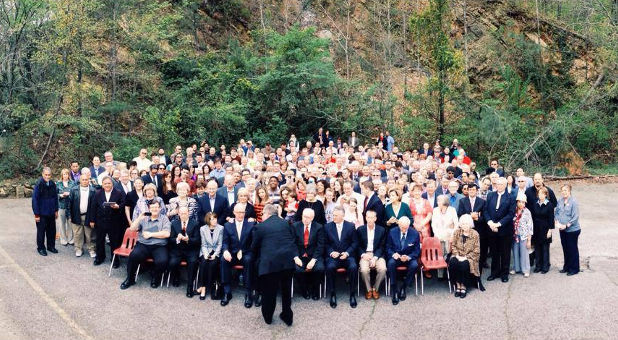The Assemblies of God is 100 years young!
When approximately 300 ministers came together in Hot Springs, Arkansas, in April 1914 and organized the Assemblies of God, they could not have envisioned what the next 100 years would bring.
The Assemblies of God (AG) was formed by a broad coalition of ministers who desired to work together to fulfill common objectives, such as sending missionaries, establishing schools, and providing fellowship and accountability. Formed in the midst of the emerging worldwide Pentecostal revival, the AG quickly took root in other countries and formed indigenous national organizations.
A Global Body
The Assemblies of God USA is a constituent member of the World Assemblies of God Fellowship (WAGF)—one of the largest families of Christian churches in the world. However, an international headquarters for the AG does not exist. The WAGF is not a legislative body. The 140-plus member bodies from around the world are all equal and relate to each other fraternally. This year also marks the 25th anniversary of the WAGF, which was formed just days after the 1989 General Council in Indianapolis.
In 1989, the AG counted 2,137,890 adherents in 11,192 U.S. churches and 18,552,282 adherents in 128,307 churches around the world. These numbers have increased significantly. In 2013, the AG counted 3,127,857 adherents in 12,792 U.S. churches and 67,512,302 adherents in more than 366,000 churches worldwide. Since 1989, that is a 46 percent increase in the number of U.S. followers and a 264 percent increase in the number of adherents worldwide.
The AG is a global body of believers because, from its beginning, deep spirituality and missions have been central to its DNA. In 1964, on the 50th anniversary of the AG, then-general superintendent Thomas F. Zimmerman wrote in Pentecostal Evangel that two common concerns united participants at the first general council: “matters of spiritual interest and a desire to reach the world with the gospel.”
People and programs come and go. But attention to these dual transcendent concerns—a deep spirituality anchored in the Word of God and a consecration to carry out the mission of God—will keep the AG from straying from its founding ideals.
Assembling the Numbers
The AG has shown growth in the number of U.S. adherents each year since 1990. That’s 24 straight years of growth at a time when most major denominations in the United States are shrinking.
In 2013, the AG grew by 1 percent, while the U.S. population only increased by 0.7 percent. The number of U.S. adherents has been increasing at a relatively steady pace—an average of 1.525 percent per year from 1989 to 2000 and 1.515 percent per year since 2001.
Assemblies of God growth stands in marked contrast to the decline of many other denominations. In recent decades, most mainline Protestant denominations in the United States have witnessed significant numerical declines. From 1960 to 2011, the United Church of Christ lost 48 percent of adherents; The Episcopal Church lost 43 percent; the Presbyterian Church (USA) lost 35 percent; the United Methodist Church lost 29 percent; and the Evangelical Lutheran Church in America lost 19 percent. Others showed increases, including the Southern Baptist Convention (66 percent) and the Roman Catholic Church (62 percent). During the same period, the AG grew by 498 percent, from 508,602 members in 1960.
While mainline Protestant denominations have been declining for decades, in the past few years some evangelical groups, such as the Southern Baptist Convention (SBC), have also begun to decline. SBC leaders recently have shown alarm over deceasing numbers of baptisms and conversions. The number of SBC baptisms has declined for seven straight years. This demographic decline has caused some pundits to predict the slow death of evangelicalism.
Robust growth of Pentecostal churches, including the AG, shows a different story. AG statistics increased last year for water baptisms, Spirit baptisms, membership, attendance, conversions and numbers of adherents, churches and ministers. Other categories, however, including attendance at Sunday evening and midweek services, declined.
An AG press release attributed much of the overall growth to increases in ethnic-minority churches and young people: “The impact is especially evident among Latino adherents, who now make up 20 percent of the Fellowship (more than 40 percent of total adherents are ethnic minorities), and Millennials (ages 18-34), who contributed 21 percent of the growth from 2001 to 2013.”
See an error in this article?
To contact us or to submit an article






















